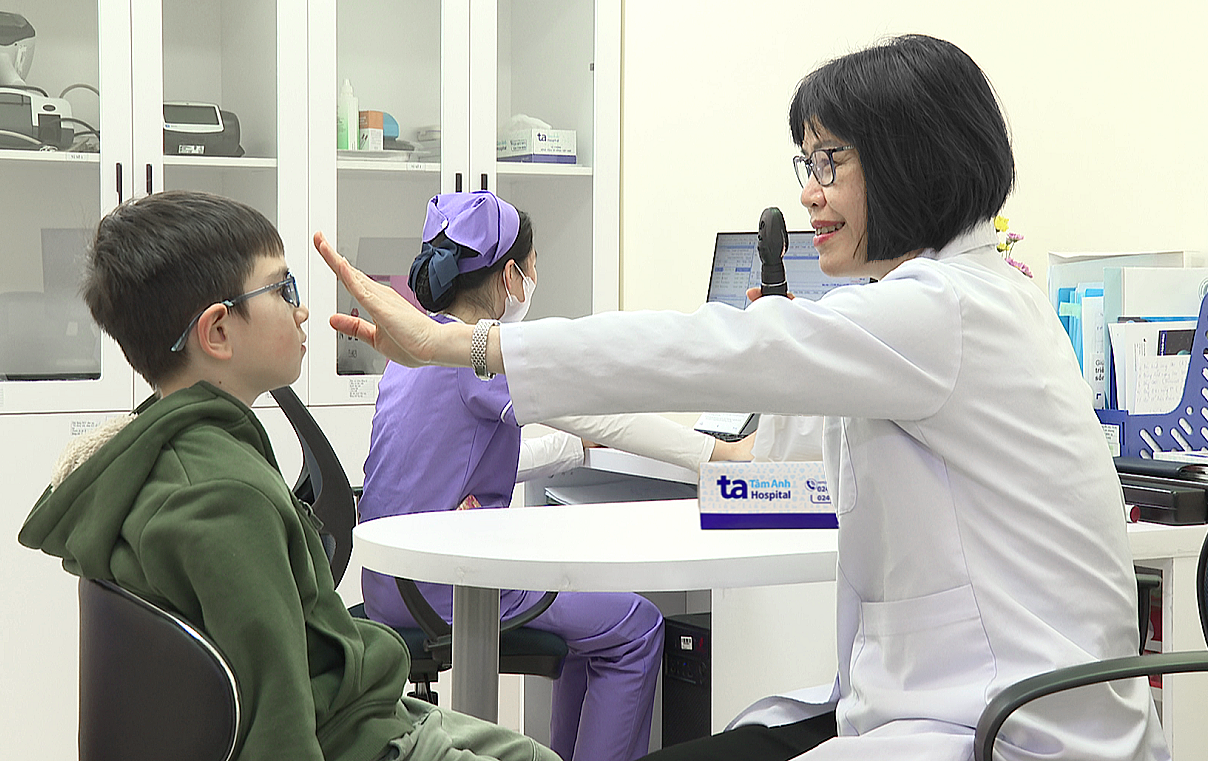Farrell Le Phong, a 7-year-old boy with mild farsightedness and crossed eyes, recently traveled from Australia to Vietnam to undergo corrective eye surgery. Dr. Nguyen Thi Thu Hien, Head of the Refractive Surgery Department at the High-Tech Eye Center, Tam Anh General Hospital in Hanoi, explained that Phong was already wearing glasses to correct his farsightedness (+1.75 in his right eye and +1.5 in his left eye) and had a visual acuity of approximately 20/25 with his glasses.
Phong's crossed eyes varied, sometimes deviating slightly by only 15 degrees, but at other times exceeding 45 degrees from the normal visual axis. This instability presented a challenge, as unresolved deviations could lead to residual strabismus after surgery or recurrence, necessitating a second procedure.
 |
Dr. Hien examines Farrell Le Phong. Photo: Tam Anh General Hospital |
After a thorough consultation and assessment of Phong's eye alignment, visual acuity, and focusing ability, doctors recommended surgery to realign his eyeballs and correct the strabismus. The procedure involved receding the medial and lateral rectus muscles of his right eye, combined with the Fadel technique (also known as muscle suspension) to minimize postoperative muscle fluctuations. This technique, often used in cases of unstable strabismus, helps reduce excessive activity of the eye muscles without significantly altering the resting position of the eyeball, thus reducing the likelihood of recurrence.
The 35-minute surgery was performed under general anesthesia. Phong recovered quickly, was discharged the same day, and was prescribed eye drops. Dr. Hien advised on post-operative care, including cleaning his eyes with warm water and monitoring for any unusual symptoms. At his 4-week follow-up appointment, Phong's eyes were aligned, his eye movements were coordinated, and his vision was stable. He will continue to wear glasses upon returning to Australia to maintain optimal vision.
According to Dr. Hien, timely intervention was crucial for Phong, as further delay could have resulted in amblyopia, an irreversible vision impairment. Dr. Hien recommends that parents proactively take their children for eye exams from birth to under one year of age, followed by regular checkups every 6-12 months. Signs such as crossed eyes, tilting the head while looking, eye strain, or closing one eye while reading could indicate potential eye problems. Early detection and treatment can effectively manage most cases of strabismus and refractive errors, safeguarding long-term vision and preventing negative impacts on a child's quality of life and learning.
Minh Duc
| Readers can submit questions about eye diseases here for doctors to answer. |












